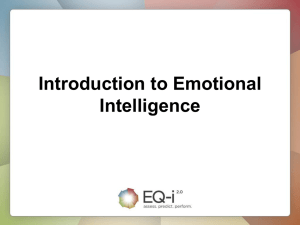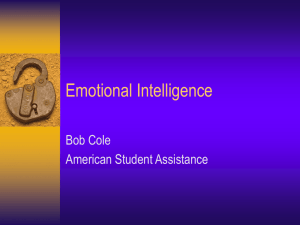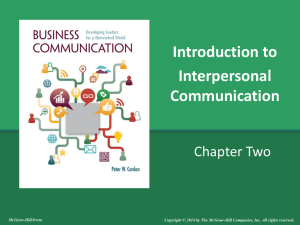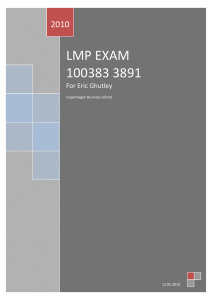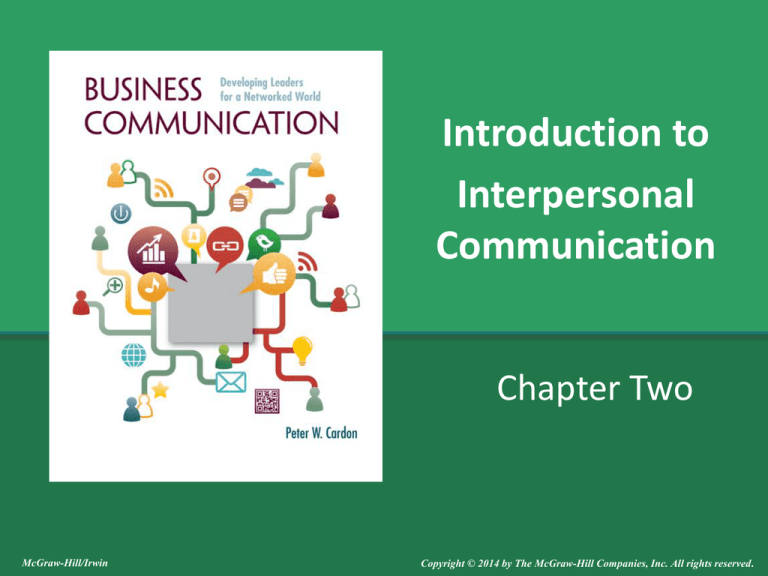
Introduction to
Interpersonal
Communication
Chapter Two
McGraw-Hill/Irwin
Copyright © 2014 by The McGraw-Hill Companies, Inc. All rights reserved.
Learning Objectives
LO2.1 Describe the interpersonal communication
process and barrier to effective communication.
LO2.2 Explain how emotional hijacking can hinder
effective interpersonal communication.
LO2.3 Describe the basic domains of emotional
intelligence and related communication
competencies.
2-2
Learning Objectives (cont.)
LO2.4 Explain the trade-offs associated with richness,
control, an constraints when choosing a
communication channel.
LO2.5 Describe how forms of communication, level of
formality, and communicator styles influence
workplace communication.
LO2.6 Explain the role of civility in effective
interpersonal communication and the common
types of incivility in the workplace.
2-3
Understanding the Interpersonal
Communication Process
Interpersonal communication process,
the process of sending and receiving verbal and
nonverbal messages between two or more
people.
involves the exchange of simultaneous and
mutual messages to share and negotiate meaning
between those involved
2-4
The Interpersonal
Communication Process
Figure 2.1
2-5
Barriers to Shared Meaning
Filter of lifetime experiences
an accumulation of knowledge, values,
expectations, and attitudes based on prior
personal experiences
2-6
Developing Emotional Intelligence
Emotional intelligence
involves understanding emotions, managing
emotions to serve goals, empathizing with
others, and effectively handling relationships with
others.
2-7
Developing Emotional Intelligence
Emotional hijacking
Figure 2.3
a situation in which
emotions control our
behavior causing us
to react without
thinking
2-8
Domains of Emotional Intelligence
Self-management
the ability to use awareness of your emotions to
stay flexible and to direct your behavior positively
involves responding productively and creatively
to feelings of self-doubt, worry, frustration,
disappointment, and nervousness.
2-9
Strategically Selecting Channels
for Communication
Communication channel
The medium through which a message is
transmitted
emails, phone conversations, and face-to-face
dialogue
2-10
Change in the Use of Communication
Channels During the Past Two Years
Figure 2.4
2-11
Strategically Selecting Channels
for Communication
Richness
involves the level of immediacy and number of
cues available.
Immediacy
relates to how quickly someone is able to
respond and give feedback.
2-12
Strategically Selecting Channels
for Communication
Resources
deal with the
financial, space, time,
and other
investments
necessary to employ
particular channels of
communication.
2-13
Factors Impacting the Formality of
Business Communication
Figure 2.5
2-14
Communicator Styles
Table 2.7
2-15

